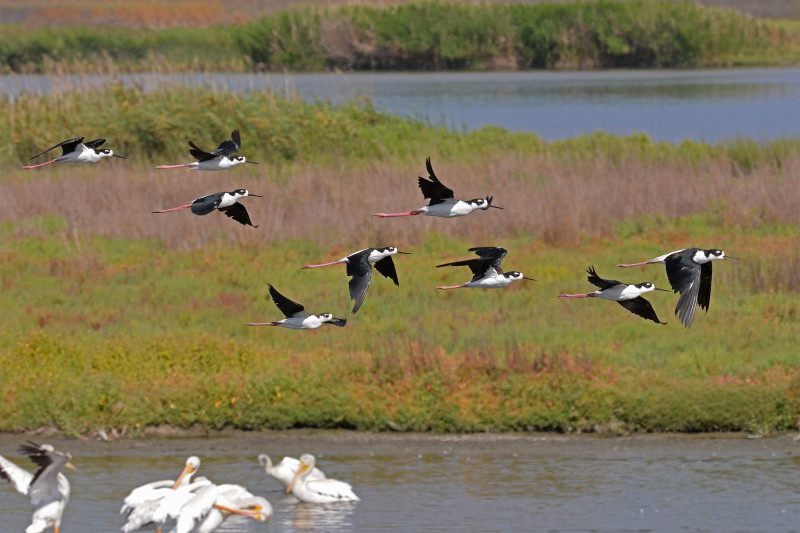Ken Chan
September 25, 2013
I have never noticed hummingbirds along the Stevens Creek trail. But, after I first spotted them earlier this month, I cannot help seeing them in the same location. I cannot tell whether this is the same hummingbird or different ones. Even from photo to photo, the colors of the hummingbird differs. Sometimes, the glint of violet shows and sometimes it does not. So, I have photographed an Anna’s Hummingbird with a 70-200mm lens and 24-70mm lens.
This time, I had the all-purpose 28-300mm lens with me.
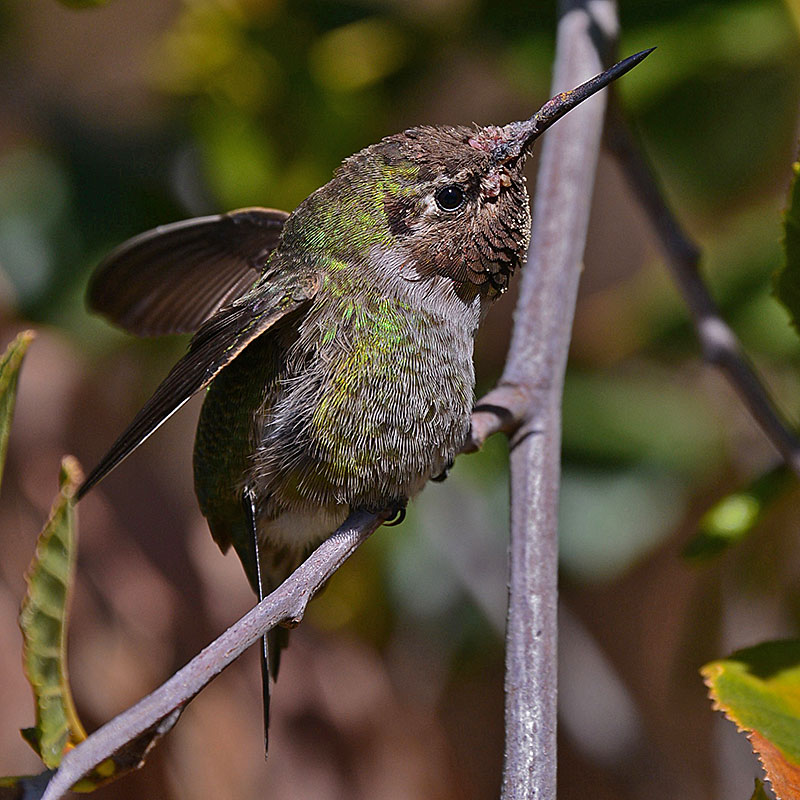
Nikon D800, AF-S Nikkor 28-300mm f/3.5-5.6G ED VR, ISO 400, 300mm, -1 EV, f/8, 1/1,000s
This is the same hummingbird. See how the violet eye shadow appears in this photo, but not in the one above, which was taken a few seconds later?
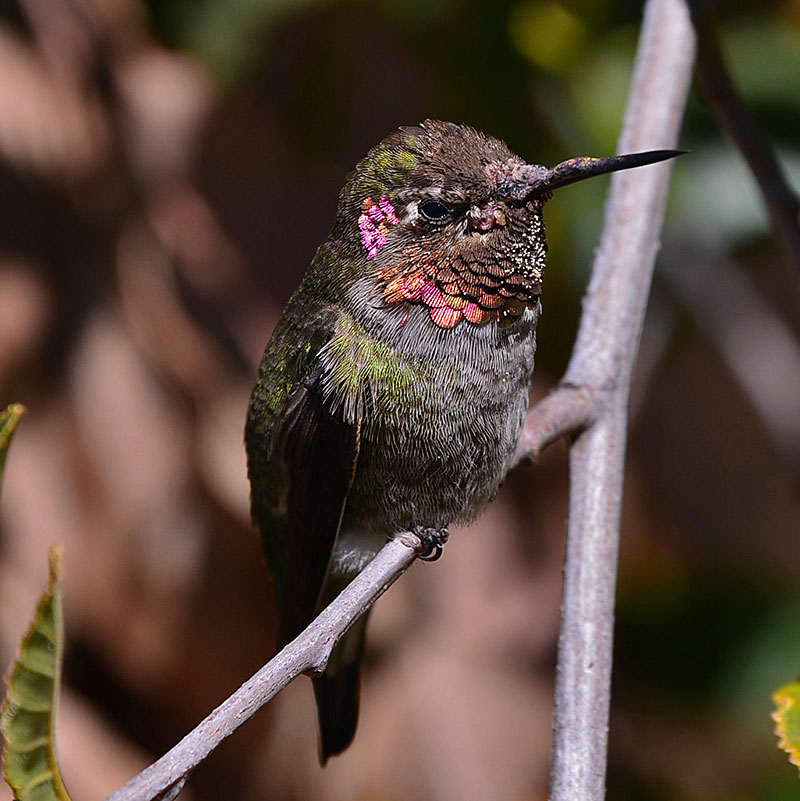
Ken Chan
September 12, 2013
I had the 24-70mm lens on the camera instead of the 70-200mm lens. Despite this, I think I ended up with a better hummingbird photo this time.
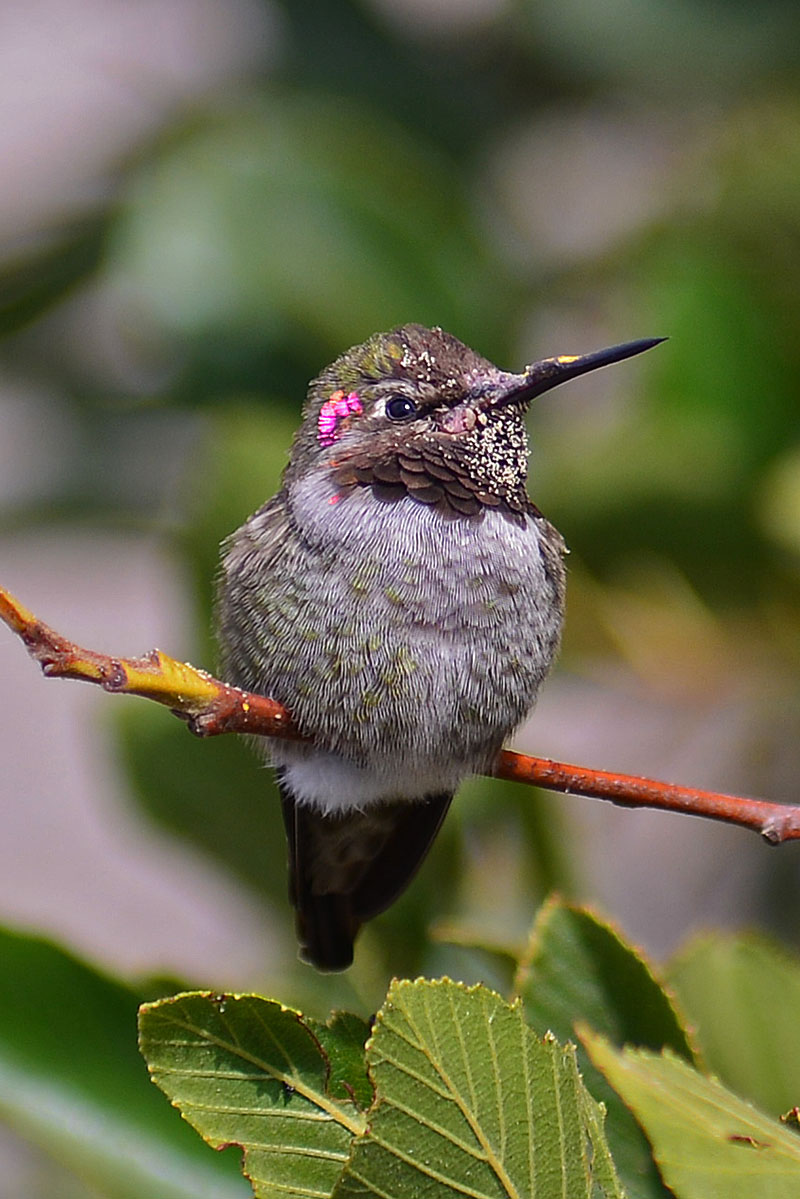
Nikon D800, AF-S Zoom-Nikkor 24-70mm f/2.8G ED, ISO 100, 70 mm, f/2.8, 1/1,000s
At first, I thought it might be the same hummingbird. But, this one had a touch of violet behind its eye.
Ken Chan
September 6, 2013
A few days ago, I was on my lunch walk when I spotted a hummingbird in the bushes. Unfortunately, I didn’t have my camera with me. So, for the next few days, I brought my camera along, but didn’t see the hummingbird at all. Today, I spotted the hummingbird again in the same location.
I think it’s an Anna’s Hummingbird. The afternoon sun was a bit harsh today. And, the hummingbird hanging out in half shade and half sun didn’t help matters.
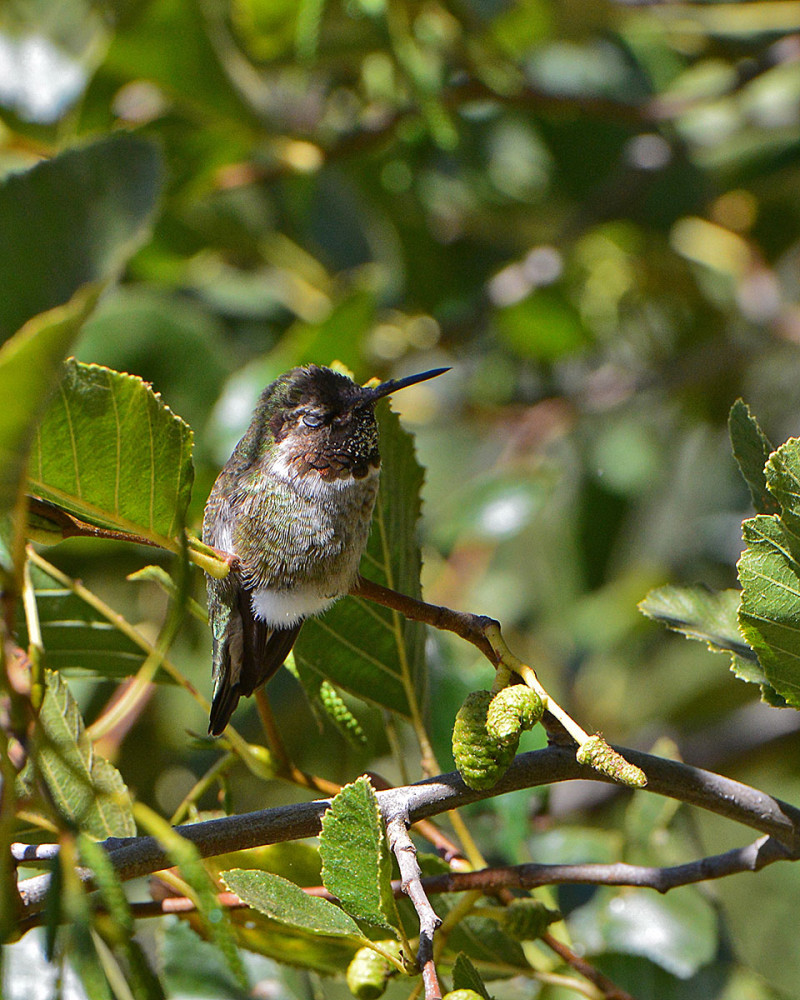
Nikon D800, Nikkor AF-S 70-200mm f/2.8G ED, ISO 1000, f/8, 1/800s
I was not able to get a clean hummingbird in flight photo, but there’s always next time.

Nikon D800, Nikkor AF-S 70-200mm f/2.8G ED, ISO 1400, f/8, 1/800s
Returned to the monopod after reviewing some more YouTube videos on how to properly use a monopod.
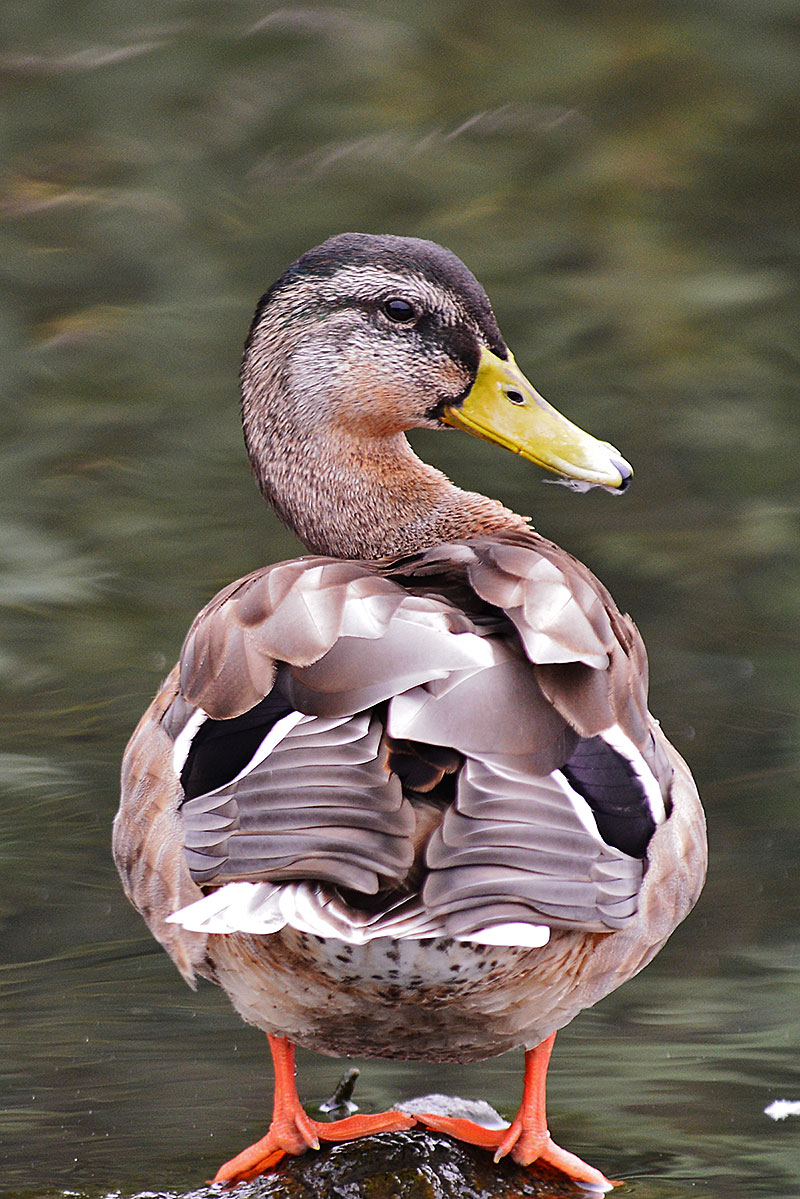
D800, AF-S VR Nikkor 300mm f/2.8G IF-ED II, ISO 800, 600mm, f/5.6, 1/400s
This Snowy Egret was seriously intense. It’s staring right into the water in search of food.
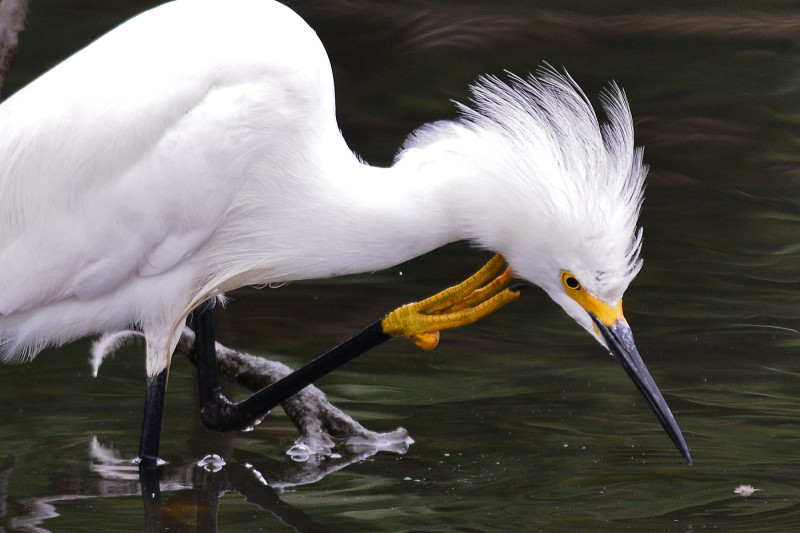
D800, AF-S VR Nikkor 300mm f/2.8G IF-ED II, ISO 800, 600mm, f/5.6, 1/800s
I think it caught a bite to eat. Looks like something with an antenna.
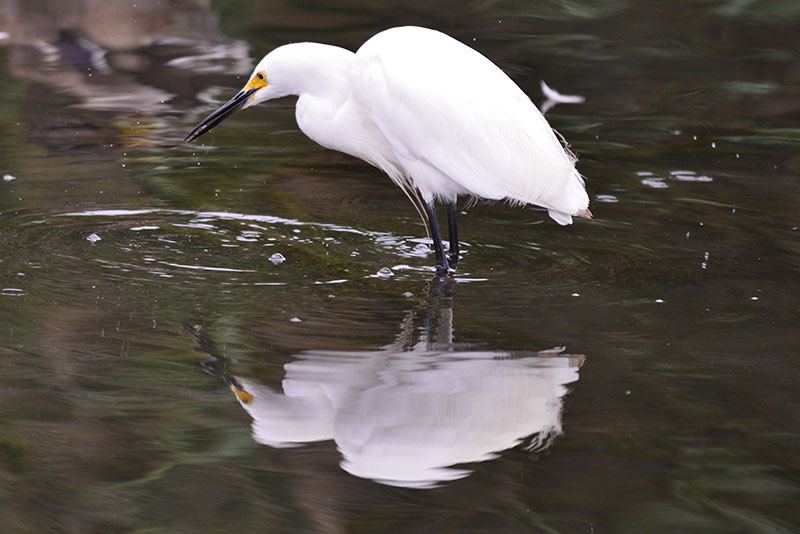
D800, AF-S VR Nikkor 300mm f/2.8G IF-ED II, ISO 800, 600mm, f/5.6, 1/800s
Taken on Nikon 300mm f/2.8G + TC-20E III on a tripod day. I saw this bird eating the flowers off this plant along the side of the road. At 600mm, I actually had to back-up. Never happened like this before.
I think this was the first time using this combination that I had to back away from the subject. Every other time, 600mm is not close enough.
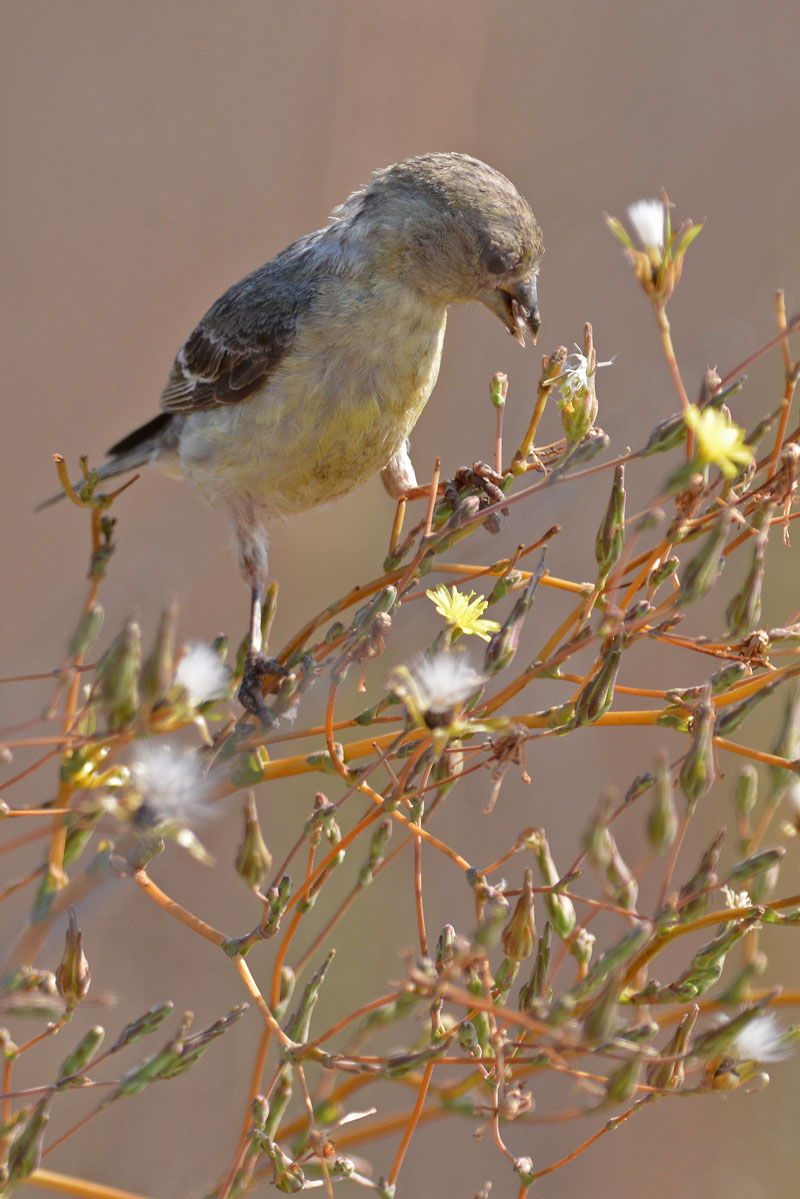
Nikon D800, AF-S VR Nikkor 300mm f/2.8G IF-ED II, ISO 640, 600mm, 0 EV, f/8, 1/640s
A lot of these birds were lined up along the edge of the gutter. Even more were just hanging out along the sloped roof. Despite a quick search, I’m still stumped as to the name of the bird.

Nikon D800, AF-S VR Nikkor 300mm f/2.8G IF-ED II, ISO 560, 600mm, 0 EV, f/5.6, 1,2000s
I had already reached the not-so-scenic pond near one of the exits to the Shoreline Regional Wildlife Area when I saw one Snowy Egret chase another one away. Although I was on my way out, I decided to stay and watch. Could be interesting.

The one being chased was an adherent of non-violence. It turned the other cheek and skipped away.

But, was that good enough?
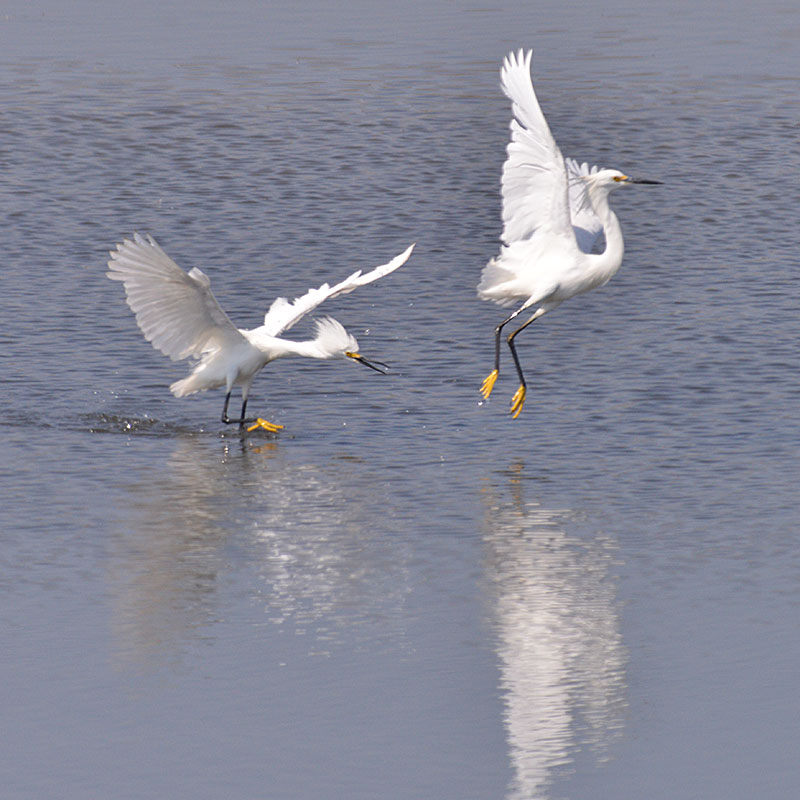
No. Snap! Not fast enough.
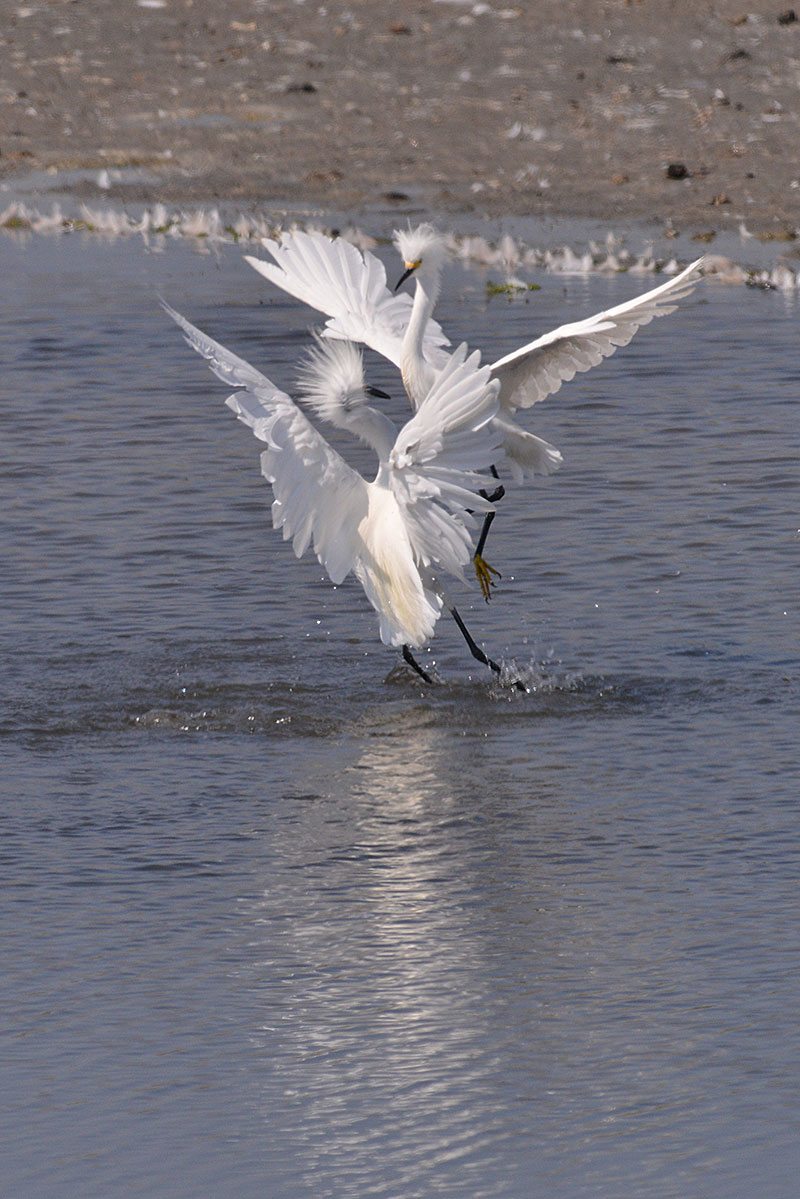
And the fight was on.
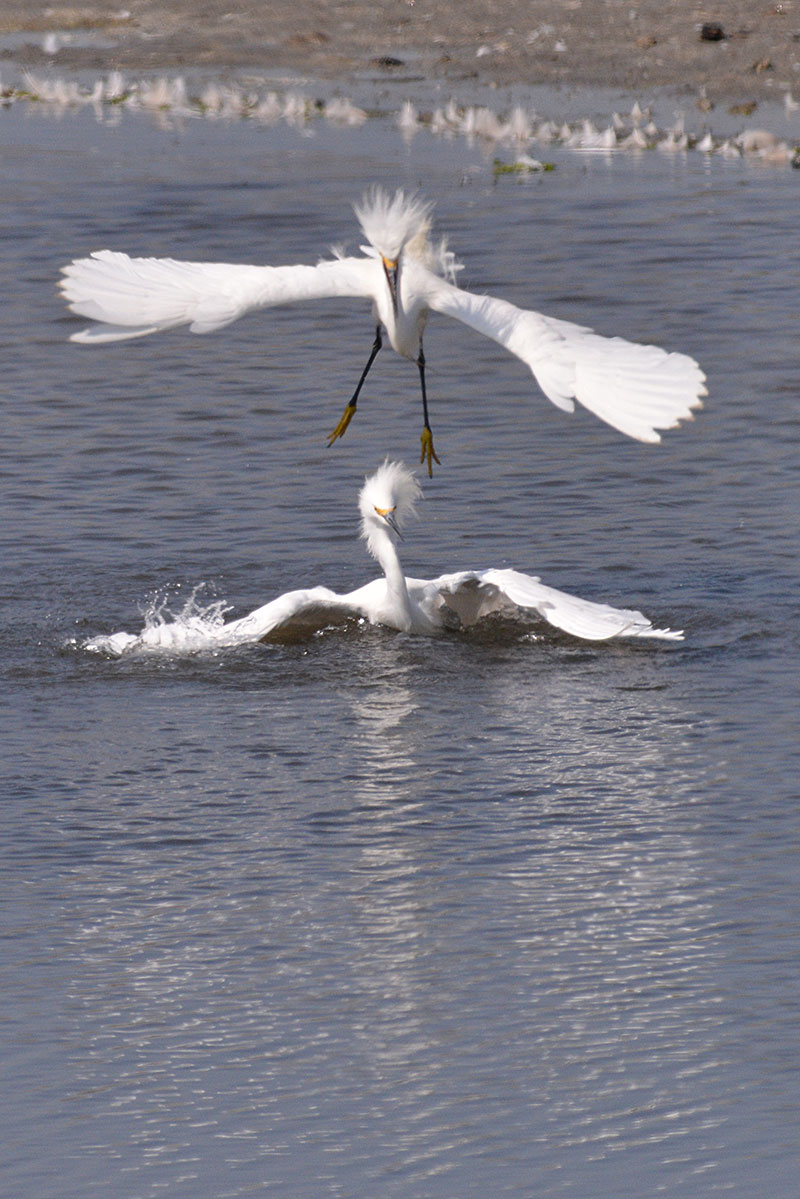
Victory!
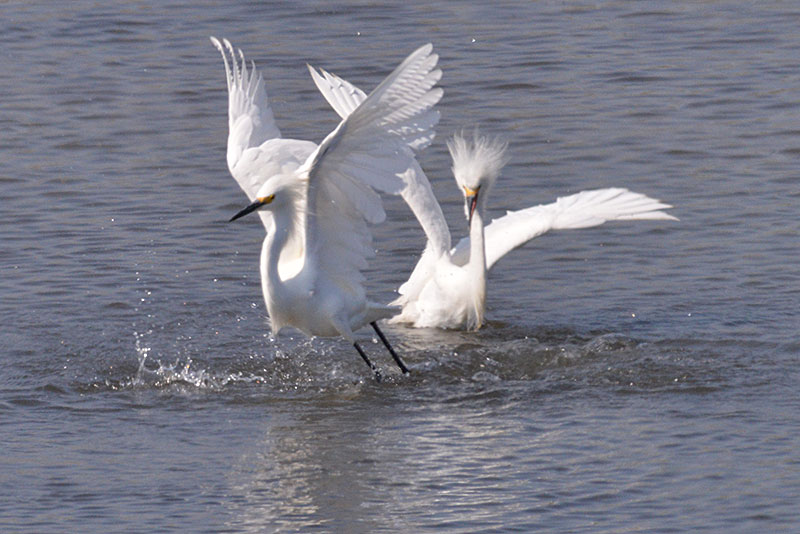
And the loser picked itself up…
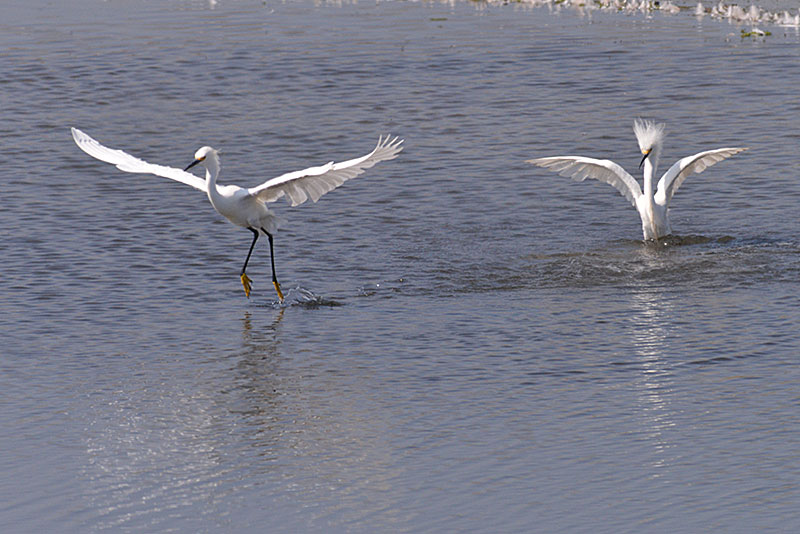
And flew away.
Yes, when walking through the marsh, the black-necked stilt does get muddy feet.
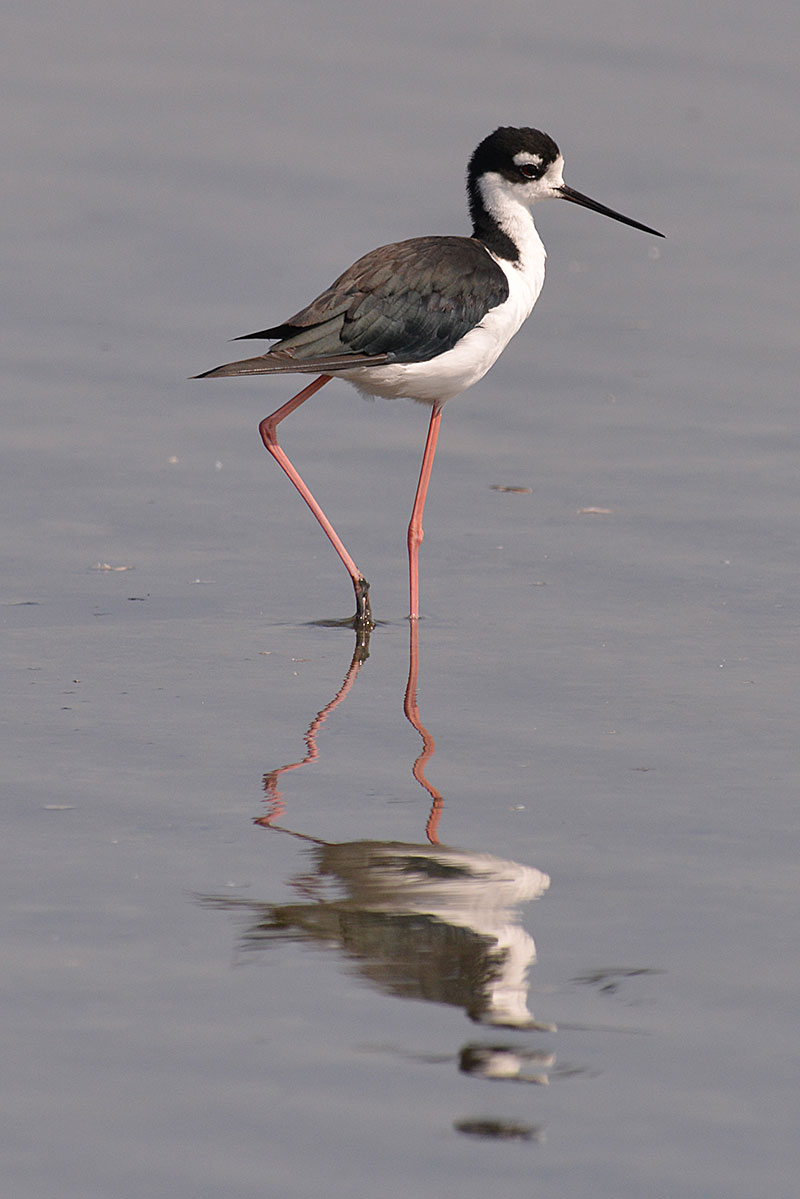
Nikon D800, AF-S VR Nikkor 300mm f/2.8G IF-ED II, ISO 450, 600mm, f/8, 1,200s
I was not entirely satisfied with some earlier photos, so I brought out the tripod this morning. The tripod is simpler and practically fool-proof, unlike the monopod. I was using the 300mm f/2.8G and the TC-20E III AF-S Teleconverter. I liked the combination.
A pair of Canada Geese (Branta canadensis) getting a running start before they take off.
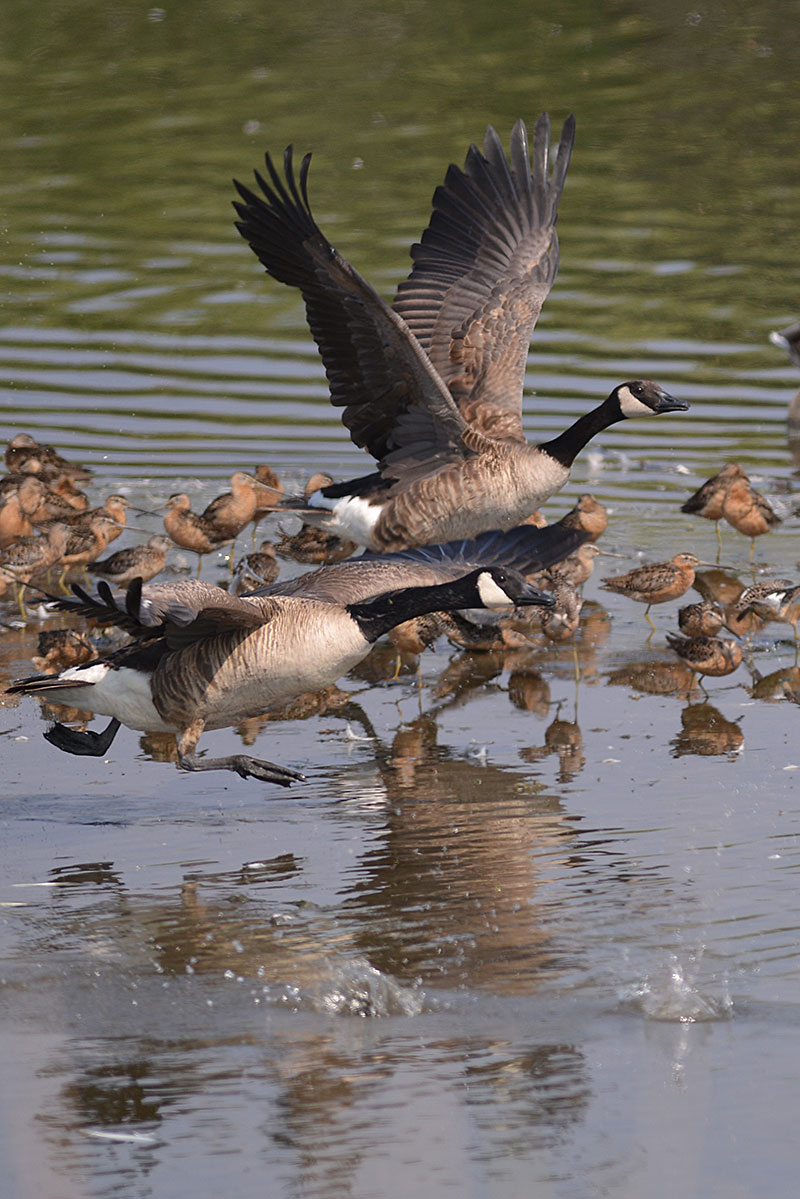
Nikon D800, AF-S VR Nikkor 300mm f/2.8G IF-ED II, ISO 100, 300mm, f/2.8, 1/2,000s
I first saw the black-necked stilt on July 17, 2013 at 8:54 A.M. Looking at the tide charts, low tide was 1:20 A.M. and high tide was 7:59 A.M. So, this was about an hour after high tide.
Last week, not many birds were in the marsh in the morning. Low tide was round 9:00-10:00 A.M., as I discovered when I went out to look for birds and found the marsh pretty much drained. So, I have to look at the weather (sunny or overcast), tides and time of day. High tide in the evening is not the same as high tide in the morning.
Looks like the cycle will be reversing, so hopefully this will be a good week.
